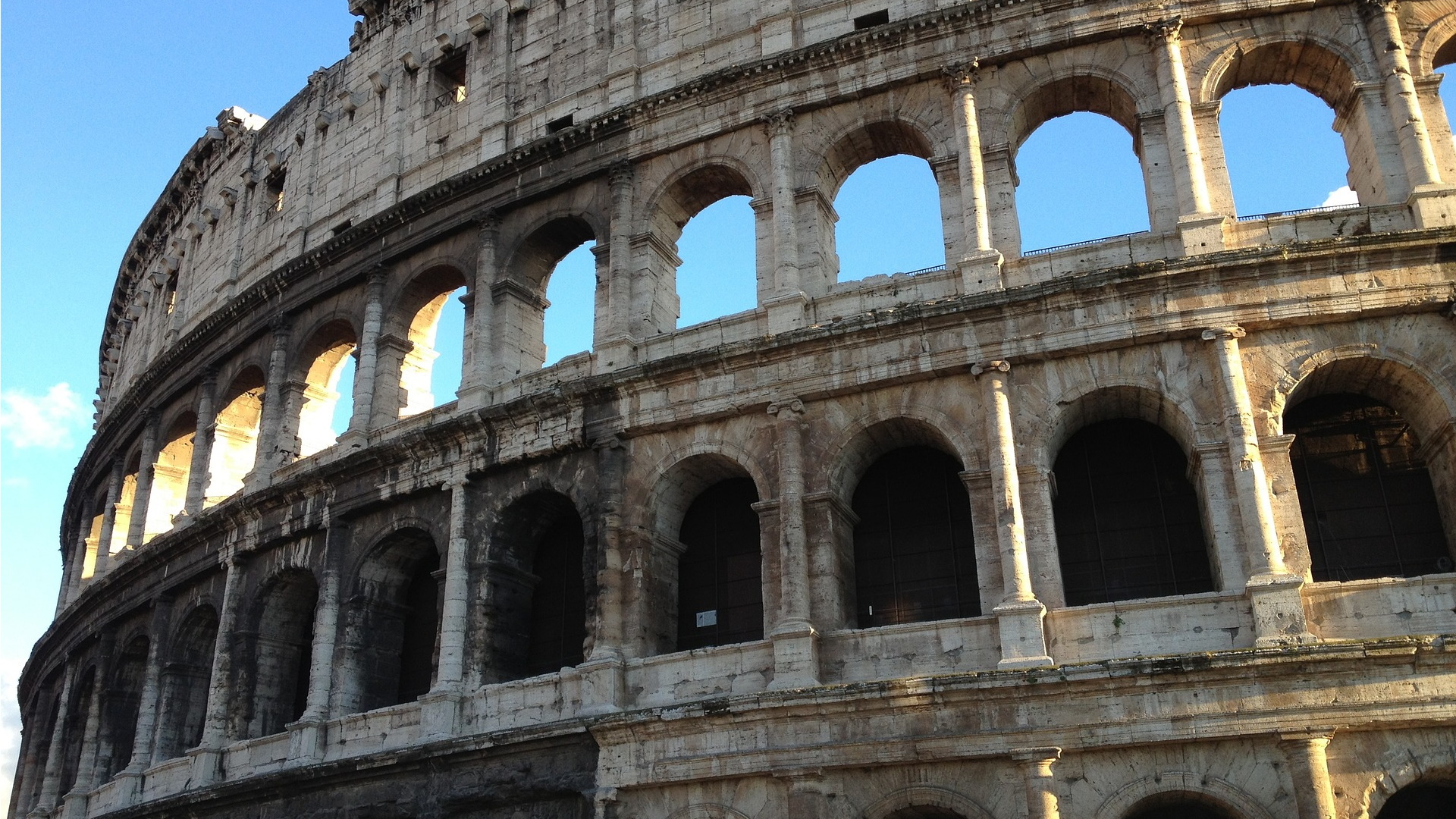
Established in 1921, after the subdivision of the Rione X - Campitelli, the Rione XIX - Celio takes its name from Cælius Vibenna, the Etruscan commander who conquered Rome in the 6th century BC, together with his brother Aulus, and chose to live in this area.
In ancient times, the Caelian Hill, on which the Rione extends, was called Querquetulanus, because it was entirely covered with oak trees. In the Republican age, however, the area was dotted with luxurious patrician villas and assumed the vocation of residential area that it still retains today.
In fact, the district is home to many private homes, hotels, B&Bs, restaurants and cafes, making it a lively but cosy area. Moreover, thanks to its wide tree-lined avenues and numerous green spaces, the Caelian Hill is ideal for a walk between nature and antiquity, in an evocative atmosphere suspended in time.
Among the Rione's most representative monuments, archaeological remains, and places of worship are the Flavian Amphitheatre, the majestic embodiment of Rome's greatness that has told an uninterrupted story of splendour and magnificence for almost two thousand years, the Arch of Constantine the largest of the three triumphal arches still preserved in Rome, the Museum of the Forma Urbis which houses the surviving fragments of the famous Forma Urbis Romae, the marvellous marble map that gives a unique panorama of the urban landscape of ancient Rome at the time of Septimius Severus, the Archaeological Park of the Caelian Hill which houses a multitude of archaeological, architectural and epigraphic finds from the great excavations of the late 19th century for the construction of new neighbourhoods, the beautiful basilica of Saints John and Paul, also known as the 'church of the chandeliers' which diffuse spectacular light effects on the inside, the Roman Houses of the Celio Hill, the extraordinary archaeological complex that contains more than four centuries of history and bears witness to the passage and coexistence of paganism and Christianity, the basilica of the Santi Quattro Coronati, a real medieval fortress in the centre of Rome and one of the city's richest monuments in history, art and spirituality, Villa Celimontana, a delightful park with gardens adorned with ancient sculptures, fountains, bitter orange trees, and the Egyptian obelisk of Ramses II, the Arch of Dolabella and Silano, one of the only two gates still open in the Servian Walls, the Fountain of the Navicella, which takes its name from an ancient Roman galley of which it is a miniature representation, the church of Santo Stefano Rotondo, the oldest circular church in Rome, and Porta San Sebastiano, the largest and best-preserved door set in the Aurelian Walls inside which is the unmissable Museum of the Walls and from which the regina viarum, the Appian Way, departs.
Symbol of the Rione and of Rome in the world, the Colosseum, the grandiose building for the entertainment and amusement of the citizens, built to be an emblem of imperial power, was intended for fights, games between gladiators (munera), simulations of hunting ferocious and exotic animals (venationes) and naumachiae (naval combats). 189 metres long, 156 metres wide and over 48 metres high, it covered an area of 24,000 square metres and could seat about 50,000 spectators. The arena measured 76 metres by 46. Its dungeons, where preparations for the shows took place, concealed an elaborate stage machine of death. To ensure that everything worked perfectly, man and gears interacted in unison: several trapdoors opened to make fighters and beasts appear by surprise, and they were lifted by 28 wooden hoists and ropes, using an elaborate system of winches.
Borders: Via di San Giovanni in Laterano, Piazza del Colosseo, Via di San Gregorio, Piazza del Circo Massimo, Via di Valle delle Camene, Via di Porta San Sebastiano, Viale delle Mura Latine, Viale Metronio, Via della Navicella, Via di Santo Stefano Rotondo.
The rione coat of arms depicts the profile of an African wearing a headdress in the shape of an elephant's head. It is adorned with golden ears and has a silver background. Probably, the image can be traced back to the legionaries of Consul Scipio the African, who encamped here. A bust depicting an "African" was found in the area and is now in the Capitoline Museums.
The Flavian Amphitheatre (The Colosseum)

 Condividi
Condividi
Arch of Costantine
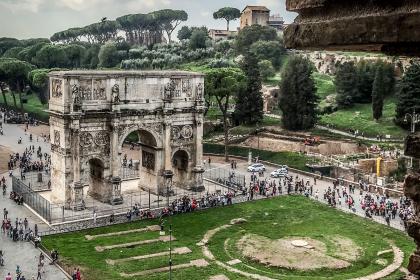
 Condividi
Condividi
Museo della Forma Urbis
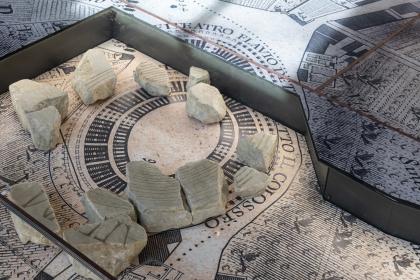
 Condividi
Condividi
Parco archeologico del Celio
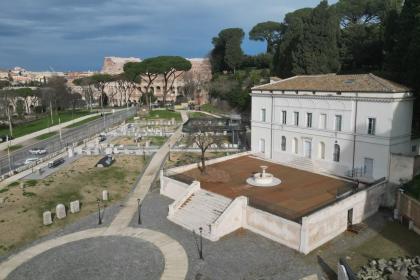
 Condividi
Condividi
Basilica of Santi Giovanni e Paolo al Celio
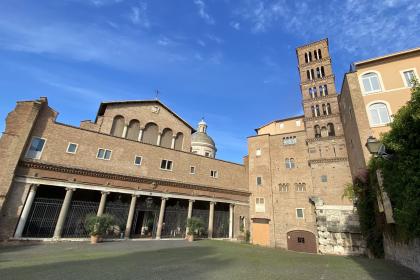
 Condividi
Condividi
Case Romane del Celio sotto SS. Giovanni e Paolo
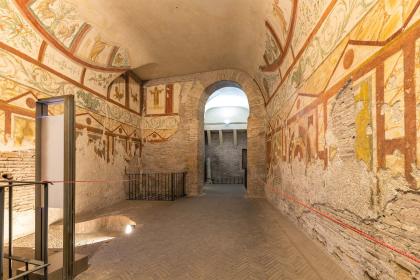
 Condividi
Condividi
Basilica and Complex of the Santi Quattro Coronati
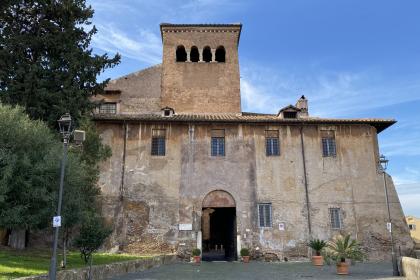
 Condividi
Condividi
Villa Celimontana

 Condividi
Condividi
Arch of Dolabella and Silano
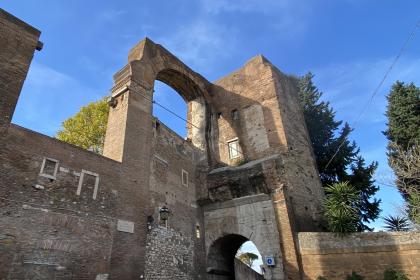
 Condividi
Condividi
The Fountain of the Navicella
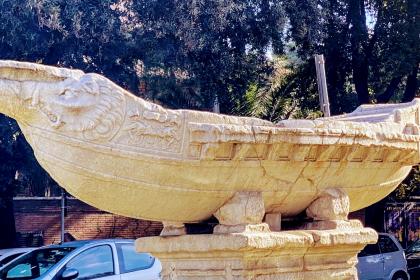
 Condividi
Condividi
The Church of Santo Stefano Rotondo al Celio
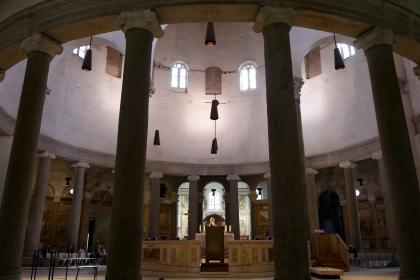
 Condividi
Condividi
Porta San Sebastiano
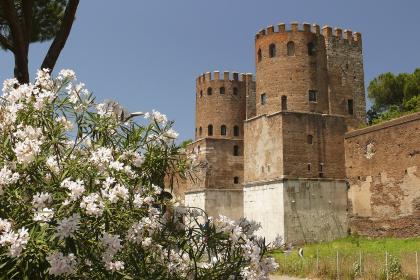
 Condividi
Condividi
Museo delle Mura
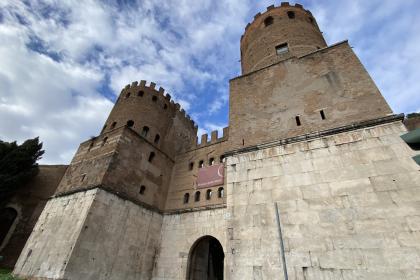
 Condividi
Condividi











































